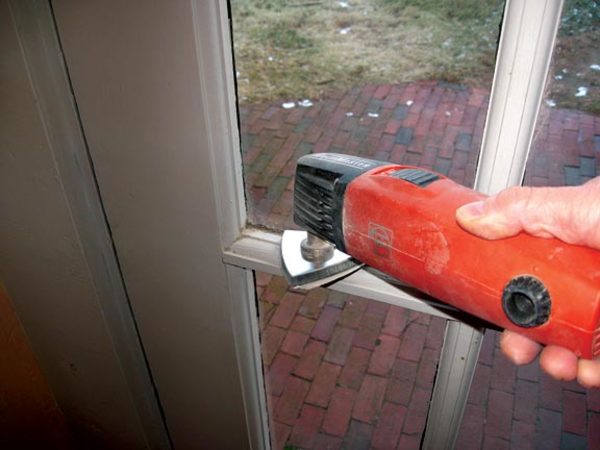As a carpenter, I generally reach for hand tools first—with one notable exception. The oscillating multi-tool, developed more than 20 years ago and originally marketed as a hobby tool, has brought a whole new set of applications to the lexicon of work I would have previously done by hand, making the jobs easier, more precise, and often faster.

Where to Use It
The multi-tool’s vibrating head rotates back and forth 3 degrees, using a variable speed control, making it one of the safest tools available. (Medical technicians use it to remove plaster and fiberglass casts.) I first used the tool with a wood-cutting blade to install Dutchmen within historic woodwork. Whereas excavating repair areas by hand with a chisel or knife can be difficult (especially for hard-to-reach in situ repairs), the multi-tool makes this process easier by allowing plunge cuts to eliminate chiseling. For some Dutchmen, the tool can even facilitate direct matches by cutting both pieces at the same time.
As its name suggests, the multi-tool can sand, cut, and grind almost anything when fitted with various attachments, although it’s best known as a detail sander. I recently used the sanding attachment to detail-sand the interior corners of muntins on windows. The triangular shape of the sanding head allowed for delicate sanding without scratching the glass, a feat practically impossible by hand.
The multi-tool also is great for cutting plaster and removing grout joints using the semi-circular carbide attachment. As part of a recent restoration on an 18th-century house, I used this attachment to neatly open holes in the plaster walls to view framing details. I also used the scraping attachment to remove a veneer of joint compound and built-up caulking on paneling.
What to Look For
The original version of the multi-tool is European and fairly expensive, with an extensive (if pricey) inventory of accessories. Within the past several years, its patent has expired, allowing a number of clones into the market. While I have not used any of these, they appear to be almost identical, and are at a price point worth consideration, especially for the occasional user.
Robert Adam founded the Preservation Carpentry Department at the North Bennet Street School, where he now serves as a senior advisor.







